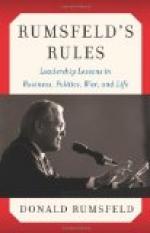The Boer Commander-in-Chief has thus, apparently, failed in his attempt to crush one wing of the British force, and has accomplished no more than bringing about its return to the main body, which must have been a part of the original British plan, unless it was thought that a British brigade was capable of defeating four times its own number of Boers.
The net result hitherto seems to be that the Boers have had the strategical and the British the tactical advantage. The British troops have proved their superiority; the Boers have shown that even against troops of better training, spirit, and discipline, numbers must tell, especially if directed according to a sound though not always perfectly-executed plan.
PLAYING WITH FIRE
November 1st, 1899
The first week’s campaign, dimly seen through scanty information, gives a peculiar impression of the two armies. The British force seems like an athlete in fine training but without an idea except that of self-preservation, while the Boer army resembles a burly labourer, clumsy in his movements, but knowing very well what he wants. The British force at first is divided upon a front of forty miles, each of its halves looking away from the other, so that there is little attention to the weak point of such a front, the communication between its parts. The first event is the cutting of this communication (on the 19th), and not until the 21st is there an attempt to clear it, and that attempt, though it leads to a severe blow against the interposing Boer force (Elandslaagte), is not successful, for the communication has eventually to be sought on another route behind the direct one. The Boer idea is, after severing the connection between the British halves, to crush the weaker Dundee portion; but the execution is imperfect, so that Sir Penn Symons has the opportunity, which he seizes instantly, to defeat and drive off one of the columns before the other can assist it. His successor, General Yule, the heir to his design, is no sooner convinced by this move to Glencoe that his line of junction with Ladysmith is threatened with attack by a great superiority than he sets out by the nearest way still open to him to rejoin the main body. The Ladysmith force covers this march by a shielding movement (Reitfontein) and the junction of the two British halves is effected. From Dundee to Ladysmith is forty miles, and General Joubert unopposed would have covered the distance in three days.




